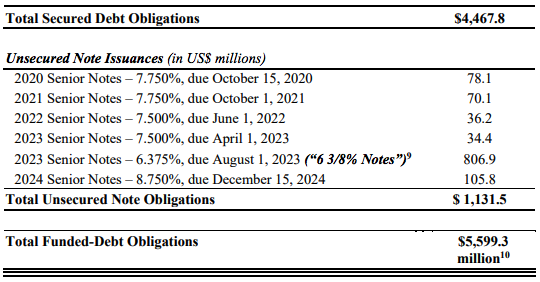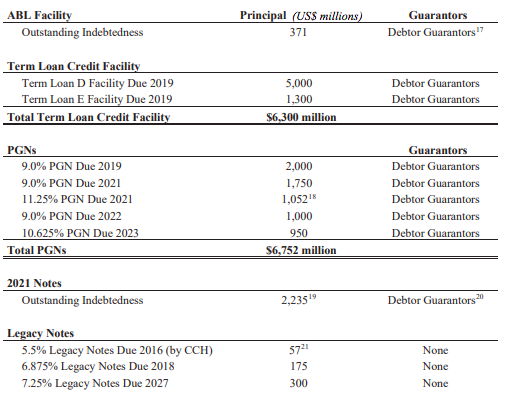March 10, 2019
WAAAAAAY back in September 2018, we highlighted in our Members’-only piece, “Online Education & ‘Community’ (Long Helen Mirren),” that esteemed author and professor Clayton Christensen was bullish about the growth of online education and bearish about colleges and universities in the US. We also wrote that Masterclass, a SF-based online education platform that gives students “access” to lessons from the likes of Helen Mirren(acting), Malcolm Gladwell (writing) and Ken Burns (documentary film making) had just raised $80mm in Series D financing, bringing its total fundraising to $160mm. Online education is growing, we noted, comporting nicely with Christensen’s thesis.
But we didn’t stop there. We counter-punched by noting the following:
Yet, not all online educational tools are killing it. Take F+W Media Inc., for instance. F+W is a New York-based private equity owned content and e-commerce company; it publishes magazines, books, digital products like e-books and e-magazines, produces online video, offers online education, and operates a variety of e-commerce channels that support the various subject matters it specializes in, e.g., arts & crafts, antiques & collectibles, and writing. Writer’s Digest is perhaps its best known product. Aspiring writers can go there for online and other resources to learn how to write.
For the last several years F+W has endeavored to shift from its legacy print business to a more digital operation; it is also beginning to show cracks. Back in January, the company’s CEO, COO and CTO left the company. A media and publishing team from FTI Consulting Inc. ($FTI) is (or at least was) embedded with new management. The company has been selling non-core assets (most recently World Tea Media). Its $125mm 6.5% first lien term loan due June 2019 was recently bid at 63 cents on the dollar (with a yield-to-worst of 74.8% — yields are inversely proportional to price), demonstrating, to put it simply, a market view that the company may not be able to pay the loan (or refinance the loan at or below the current economics) when it comes due.
Unlike MasterClass and Udacity and others, F+W didn’t start as an all-digital enterprise. The shift from a legacy print media business to a digital business is a time-consuming and costly one. Old management got that process started; new management will need to see it through, managing the company’s debt in the process. If the capital markets become less favorable and/or the business doesn’t show that the turnaround can result in meaningful revenue, the company could be F(+W)’d. (emphasis added)
Nailed it.
On March 10, 2019, F+W Media Inc., a multi-media company owning and operating print and digital media platforms, filed for chapter 11 bankruptcy in the District of Delaware along with several affiliated entities. We previously highlighted Writer’s Digest, but the company’s most successful revenue streams are its “Crafts Community” ($32.5mm of revenue in 2018) and “Artist’s Network” ($.8.7mm of revenue in 2018); it also has a book publishing business that generated $22mm in 2018. In terms of “master classes,” the bankruptcy papers provide an intimate look into just how truly difficult it is to transform a legacy print business into a digital multi-media business.
The numbers are brutal. The company notes that:
“In the years since 2015 alone, the Company’s subscribers have decreased from approximately 33.4 million to 21.5 million and the Company’s advertising revenue has decreased from $20.7 million to $13.7 million.”
This, ladies and gentlemen, reflects in concrete numbers, what many in media these days have been highlighting about the ad-based media model. The company continues:
Over the past decade, the market for subscription print periodicals of all kinds, including those published by the Company, has been in decline as an increasing amount of content has become available electronically at little or no cost to readers. In an attempt to combat this decline, the Company began looking for new sources of revenue growth and market space for its enthusiast brands. On or around 2008, the Company decided to shift its focus to e-commerce upon the belief that its enthusiast customers would purchase items from the Company related to their passions besides periodicals, such as craft and writing supplies. With its large library of niche information for its hobbyist customers, the Company believed it was well-positioned to make this transition.
What’s interesting is that, rather than monetize their “Communities” directly, the company sought to pursue an expensive merchandising strategy that required a significant amount of upfront investment. The company writes:
In connection with this new approach, the Company took on various additional obligations across its distribution channel, including purchasing the merchandise it would sell online, storing merchandise in leased warehouses, marketing merchandise on websites, fulfilling orders, and responding to customer service inquiries. Unfortunately, these additional obligations came at a tremendous cost to the Company, both in terms of monetary loss and the deterioration of customer relationships.
In other words, rather than compete as a media company that would serve (and monetize) its various niche audiences, the company apparently sought to use its media as a marketing arm for physical products — in essence, competing with the likes of Amazon Inc. ($AMZN), Walmart Inc. ($WMT) and other specialty hobbyist retailers. As if that wasn’t challenging enough, the company’s execution apparently sucked sh*t:
As a consequence of this shift in strategic approach, the Company was required to enter into various technology contracts which increased capital expenditures by 385% in 2017 alone. And, because the Company had ventured into fields in which it lacked expertise, it soon realized that the technology used on the Company’s websites was unnecessary or flawed, resulting in customer service issues that significantly damaged the Company’s reputation and relationship with its customers. By example, in 2018 in the crafts business alone, the Company spent approximately $6 million on its efforts to sell craft ecommerce and generated only $3 million in revenue.
Last we checked, spending $2 to make $1 isn’t good business. Well, unless you’re Uber or Lyft, we suppose. But those are transformative visionary companies (or so the narrative goes). Here? We’re talking about arts and crafts. 🙈
As if that cash burn wasn’t bad enough, in 2013 the company entered into a $135mm secured credit facility ($125mm TL; $10mm RCF) to fund its operations. By 2017, the company owed $99mm in debt and was in default of certain covenants (remember those?) under the facility. Luckily, it had some forgiving lenders. And by “forgiving,” we mean lenders who were willing to equitize the loan, reduce the company’s indebtedness by $100mm and issue a new amended and restated credit facility of $35mm (as well as provide a new $15mm tranche) — all in exchange for a mere 97% of the company’s equity (and some nice fees, we imagine). Savage!
As if the spend $2 to make $1 thing wasn’t enough to exhibit that management wasn’t, uh, “managing” so well, there’s this:
The Company utilized its improved liquidity position as a result of the Restructuring to continue its efforts to evolve from a legacy print business to an e-commerce business. However, largely as a result of mismanagement, the Company exhausted the entire $15 million of the new funding it received in the six (6) months following the Restructuring. In those six (6) months, the Company’s management dramatically increased spending on technology contracts, merchandise to store in warehouses, and staffing while the Company was faltering and revenue was declining. The Company’s decision to focus on e-commerce and deemphasize print and digital publishing accelerated the decline of the Company’s publishing business, and the resources spent on technology hurt the Company’s viability because the technology was flawed and customers often had issues with the websites.
What happened next? Well, management paid themselves millions upon millions of dollars in bonuses! Ok, no, just kidding but ask yourself: would you have really been surprised if that were so?? Instead, apparently the board of directors awoke from a long slumber and decided to FINALLY sh*tcan the management team. The board brought in a new CEO and hired FTI Consulting Inc. ($FTI) to help right the ship. They quickly discovered that the e-commerce channel was sinking the business (PETITION Note: this is precisely why many small startup businesses build their e-commerce platforms on top of the likes of Shopify Inc. ($SHOP) — to avoid precisely the e-commerce startup costs and issues F+W experienced here.).
Here is where you insert the standard operational restructuring playbook. Someone built out a 13-week cash flow model and it showed that the company was bleeding cash. Therefore, people got fired and certain discreet assets got sold. The lenders, of course, took some of those sale proceeds to setoff some of their debt. The company then refreshed the 13-week cash flow model and…lo and behold…it was still effed! Why? It still carried product inventory and had to pay for storage, it was paying for more lease space than it needed, and its migration of e-commerce to partnerships with third party vendors, while profitable, didn’t have meaningful enough margin (particularly after factoring in marketing expenses). So:
Realizing that periodic asset sales are not a long-term operational solution, the Company’s board requested alternative strategies for 2019, ranging from a full liquidation to selling a significant portion of the Company’s assets to help stabilize operations. Ultimately, the Company determined that the only viable alternative, which would allow it to survive while providing relief from its obligations, was to pursue a sale transaction within the context of a chapter 11 filing.
Greenhill & Co. Inc. ($GHL) is advising the company with respect to a sale of the book publishing business. FTI is handling the sale of the company’s Communities business. The company hopes both processes are consummated by the end of May and middle of June, respectively. The company secured an $8mm DIP credit facility to fund the cases.
And that DIP ended up being the source of some controversy at the First Day hearing. Yesterday morning, Judge Gross reportedly rebuked the lenders for seeking a 20% closing fee on the $8mm DIP; he suggested 10%. Per The Wall Street Journal:
Judge Gross said he didn’t want to play “chicken” with the lenders, but that he didn’t believe they should use the bankruptcy financing to recoup what they were owed before the chapter 11 filing.
Wow. Finally some activist push-back on excessive bankruptcy fees! Better late than never.
Updated 4/23












